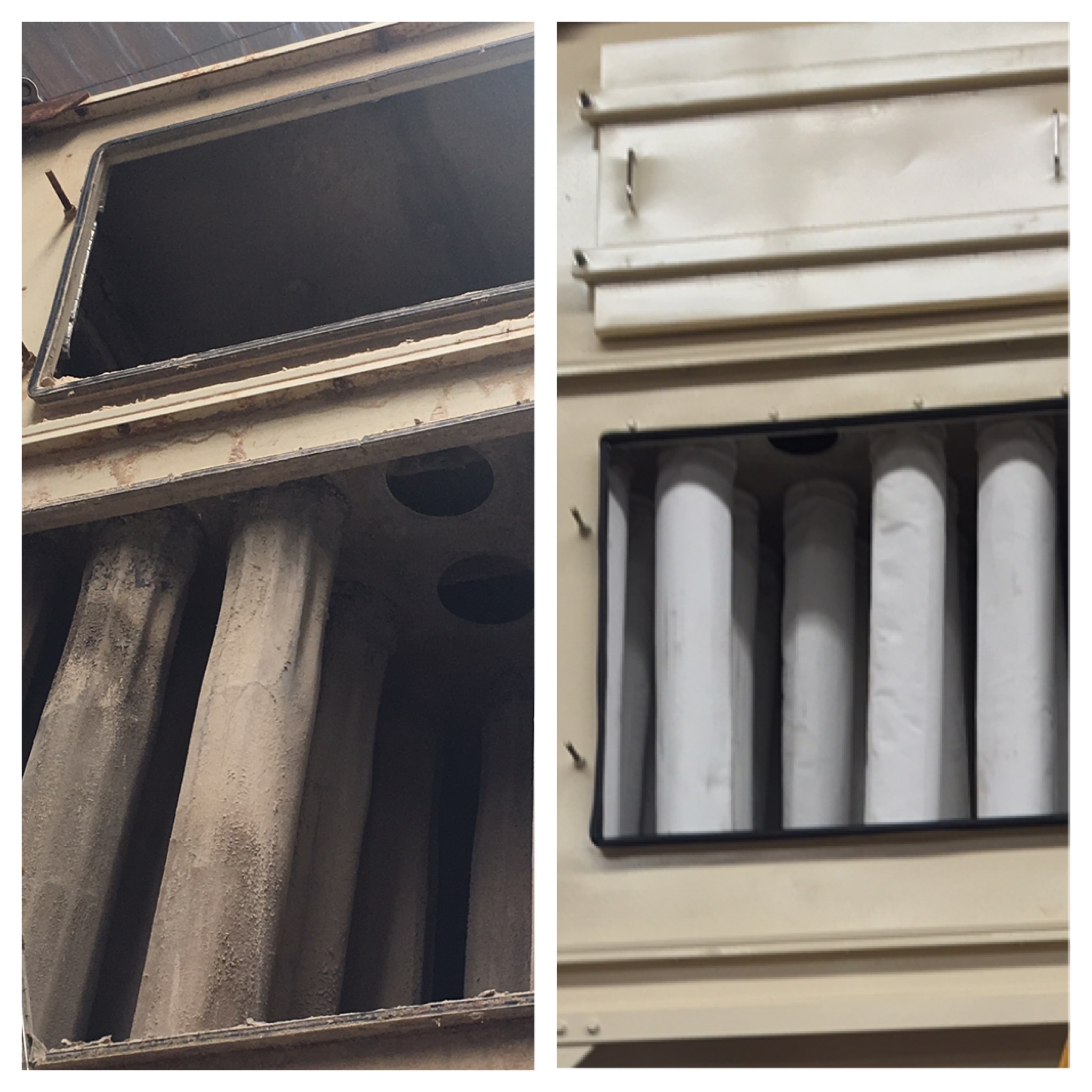Fabric collectors use filtration to remove dust particles from dusty gases and are normally known as baghouses. They are one of the most cost-effective and efficient types of dust collectors available today. They can reach a collection efficiency of more than 99% for very miniscule particulates. Gases that are riddled with particles enter the baghouse and pass through cloth bags that act as filters. There are many different bag types. The bags can be felted cotton, woven, synthetic, or glass-fibre material in either a cylinder or an envelope shape. A filter enhancer is applied to the bags to ensure they have a long lifespan. The use of chemically inert limestone is most normal as it certainly maximises the effectiveness of dust collection
The bags can be felted cotton, woven, synthetic, or glass-fibre material in either a cylinder or an envelope shape. A filter enhancer is applied to the bags to ensure they have a long lifespan. The use of chemically inert limestone is most normal as it certainly maximises the effectiveness of dust collection
Fabric filters generally have the following parts:
- Clean plenum
- RAV/SCREW
- Compressed air header
- Blow pipe
- Housing and hopper
- Dusty plenum
- Bag, cage, venturi assembly
- Tubeplate
You can actually characterize bag houses by their cleaning method.
- Shaking – A motor drives a rod joining to the bag. As a result, this delivers motions to remove built up particles.
- Reverse air – Air flow overall gives the bag shape. Dirty air flows through the bag from the inside, allowing dust to collect on the inner surface
- Pulse jet – This type of baghouse cleaning is indeed the most popular. A high-pressure blast of air removes dust from the bag.
- Sonic – Sonic is undoubtedly the least common type of cleaning method. Sonic vibration is what acheives the shaking.
- Cartridge collectors – Cartridge collectors use perforated metal cartridges. These contain a pleated, nonwoven filtering media instead of woven or felt bags used in baghouses.






